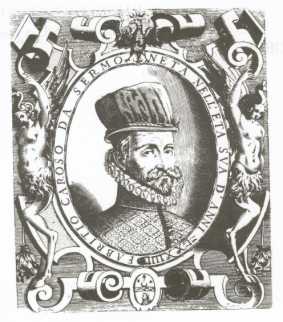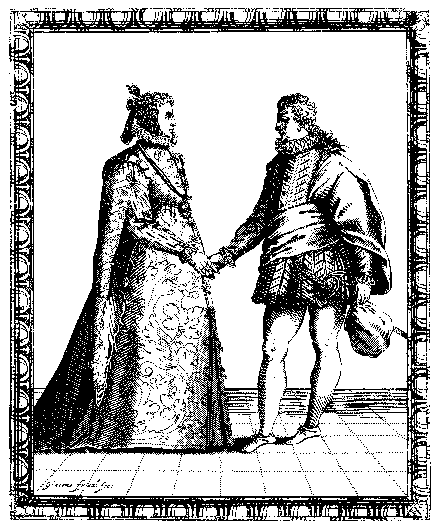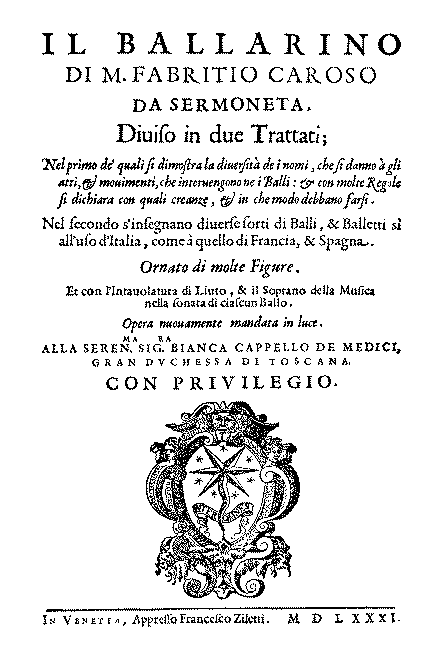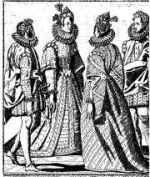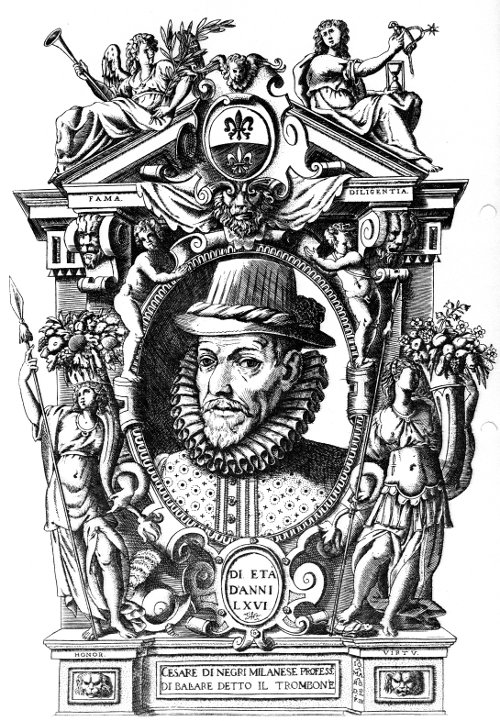Fabritio Caroso
Fabritio Caroso (* 1525/35 in Sermoneta, † 1605/20 ), Italian dance masters of the Renaissance and the author of two extensive dance treatises.
About Carosos life little is known. Information on his biography are only indirectly from information in his two treatises, read in particular with reference to the dance dedications. Caroso was born 1525-1535 in Sermoneta ( Lazio ). He was probably a pupil of M [ eater ] Battistino. Some of the Battistino ascribed choreographies from Il Ballarino, the Caetani family, lords of Sermoneta are dedicated.
Using numerous dedications to members of the Orsini family, and Roman noblewomen is a first activity in or around Rome derive. In the late 1570s he increasingly likely have been active in the sphere of influence of the Medici family in Tuscany. As the title changed in the two treatises shows Caroso ( Sig Fabritio Caroso ) was collected from the knife (M. Fabritio Caroso ) for Signore. This is likely related to the dance dedications are available to members of the Caetani family.
In addition to step descriptions and general rules of conduct, his two works contain a total of 131 choreographies of social dances of his time, to which the music is notated in lute tablature. Together with the treatises of Cesare Negri give his two treatises an extensive and detailed idea of courtly social and stage dance in Italy in the second half of the 16th century.
Carosos first treatise Il Ballarino (Venice 1581) is dedicated to Bianca Cappello. This was a colorful figure in Florence. She died under mysterious circumstances only briefly after her husband Francesco I de ' Medici, Grand Duke of Tuscany after a hunting accident in their preferred place of residence, the villa at Poggio a Caiano died. With his death and the subsequent takeover of the government by his brother Ferdinando I de ' Medici, is likely to have found their end at the court of the Medici Carosos career. Many of acting under Francesco artists were dismissed and replaced by new, committed with Ferdinando from Rome to Florence.
The dedication of the second treatise Nobiltà di lady at Don Ranuccio Farnese, Duke of Parma and Piacenza, suggesting that there Caroso has sought a new field of activity. With the printing of his second treatise, however, also loses track of his person. Date of death and place of death are unknown.
Carosos Il Ballarino contains 81 choreographies. With few exceptions, all the dances next to a title to the assignment to a particular genus and the name of each dedicatee. A basic distinction is between open and closed forms of dance. Among the closed dance forms part of the Balletto and the Cascarda. Here all the steps for a specific choreography are strictly prescribed. In open dance forms, such Canario, Gagliarda, Tordiglione and Passamezzo each is a larger pool of steps and step sequences available, which comes improvising on the application within a specified frame.
The choreography in Il Ballarino are arranged hierarchically. The dances for the senior ladies ( Serenissima et Illustrissima Signora, Illustrissima Sig.a ) are at the beginning of the treatise, and are each also supplemented with a picture. The following are the dances for the lower-ranking women ( Illustra Sig.a, Gentil Donna ). The music is recorded only here in lute tablature and has no additional soprano voice in mensural on.
Works
- Il Ballarino, Venice 1581; Facsimile: Tree Edition, Lübeck 2009
- Nobiltà di Dame, Venice 1600 ( 21605 ); ( = Raccolta di varij Balli, Rome 1630).


